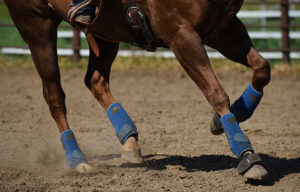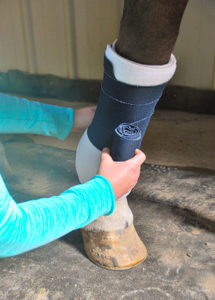Detecting Coffin Bone Fractures in Young Foals
With their spindly limbs and delicate bodies, young foals are at risk for an array of injuries. One that researchers are determining is more common than previously thought are distal phalanx (coffin bone) fractures.
Babak Faramarzi, DVM, MSc, PhD, assistant professor at Western University of Health Sciences’ College of Veterinary Medicine, in Pomona, California, studied this fracture’s prevalence in young foals and how to best diagnose it. He presented his findings during the 2014 American Association of Equine Practitioners Convention, held Dec. 6-10 in Salt Lake City, Utah.
Faramarzi began by describing the seven types of distal phalanx fractures, each involving a different portion of the foot. Foals typically experience Type VII fractures of the solar margin (toward where the hoof meets the ground) that, while often unnoticed due to lack of lameness, do have an excellent prognosis, he said.
"In adult horses, the most common cause (of distal phalanx fracture) is trauma (e.g., kicking a wall or hard surface)," Faramarzi explained. "The etiology is not known in foals," but could result from excessive force from the deep digital flexor tendon, conformation, nutrition, genetics, excessive sole trimming, and being turned out on muddy surfaces
Create a free account with TheHorse.com to view this content.
TheHorse.com is home to thousands of free articles about horse health care. In order to access some of our exclusive free content, you must be signed into TheHorse.com.
Start your free account today!
Already have an account?
and continue reading.

Written by:
Alexandra Beckstett
Related Articles
Stay on top of the most recent Horse Health news with















